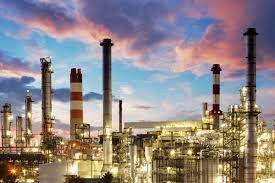Beijing June 30 2022: China will subsidize refineries if its reference basket of crude prices rise over $130/b, a move to sustain gasoline and gasoil production to ensure domestic supplies under its current oil product pricing mechanism, according to a government notice released June 29.
The notice stated that the government will cover the subsidy for two months.
This suggests that Beijing has estimated that crude prices are unlikely to stay over $130/b for more than two months as it will hurt consumption, a Beijing-based source with knowledge of the matter told S&P Global Commodity Insights June 30.
Under China’s current oil product pricing mechanism, the National Development Reform Commission sets retail gasoline and gasoil ceiling prices every 10 working days in line with a basket of benchmark crude prices, when the weighted average of the basket during the window is in a range of $40-$80/b.
It will not adjust the ceiling prices when the crude price change is less than Yuan 50/mt ($7.47/mt), or $1/b for gasoil and 88 cents/b for gasoline, or under exceptional circumstances.
The government does not release the formula and the basket of crudes. But Beijing-based sources said the basket of international crudes comprises ICE Brent, NYMEX WTI and DME Oman, weighted as per China’s crude import slate.
However, when the reference crude prices surpass $80/b during the monitoring window, NDRC narrows the retail price adjustments for the oil products in order to ease inflation. And when crude prices cross $130/b, the top economy planner will freeze the fuel price adjustment.
As a result, China’s refining margins may decline when crude prices are above $80/b and, theoretically, these refiners may incur losses when prices are over $130/b.
Perfection
As crude prices approach the $130/b mark, China’s Ministry of Finance and NDRC announced a subsidy for refineries on gasoline and gasoil sales by paying them the amount of the adjustment generated from the formula, according to the notice published on the MOF’s website.
Government authorities said they will release further measures on price controls, including those related to the subsidies and the freeze on retail prices, should the reference crude prices remain over $130/b for more than two months.
“There is risk for crude price to hit $130/b due to geopolitical issues, but such a high price level is unlikely to last long as demand will drop,” the Beijing-based source said. “So, the freeze and subsidy timeframe is set for two months.”
He added that the government will adjust these measures should an extreme situation arise.
At 4:30 pm Singapore time (0830 GMT), the September ICE Brent crude futures contract was down 89 cents/b (0.78%) from the previous close at $112.73/b, while the NYMEX August light sweet crude contract fell $1.64/b (1.47%) at $109.97/b.
This is the second time the government has had to perfect the mechanism since it was introduced in March 2013 when oil prices were firmly above $100/b.
In January 2016, when oil prices slumped, the government introduced a floor price of $40/b based on the basket of crudes then so as to freeze the downward adjustment in an effort aimed at protecting the country’s domestic oil industry and long-term energy plan.
At the same time, the government had set up a fund to absorb the monies that refineries generated from the suspension of price adjustments. The fund is to be used to strengthen oil supply security, upgrade oil products and improve emission standards.
Aims to ensure energy supply
The Beijing-based source said the government is aware that the current pricing mechanism discourages refining when crude prices are high, “but we have to balance inflation pressures and supply security, so the subsidy is introduced, and oil product exports are controlled.”
China is one of the few countries that has a relatively low inflation rate, with CPI up by only 2.1% year on year in May, and down 0.2% from April, data from the National Bureau of Statistics showed.
In China, state-owned refineries, which account for about 65% of the country’s capacity, have the obligation to ensure domestic supplies even when they are making losses. Independent refineries, on the other hand, are swing suppliers, sensitive to refining margins.
“The subsidy will help to partly offset refining losses, better than nothing,” a refining source with a state-owned oil giant said.
“It will still be difficult to make a profit even with the subsidy,” a Shandong-based independent refiner said. “Andit takes time to get the cash back due to the paper work.”
The government requires refineries to apply the subsidy with their tax reports. Hence, independent refineries are unlikely to obtain the subsidy from a large proportion of gasoline and gasoil barrels they sell without a tax report, a second independent refiner said.
Independent refineries have been suffered from refining losses since March, and the negative margin deepened to Yuan 352/mt in May due to high crude prices and slow domestic demand, according to local information provider JLC.










